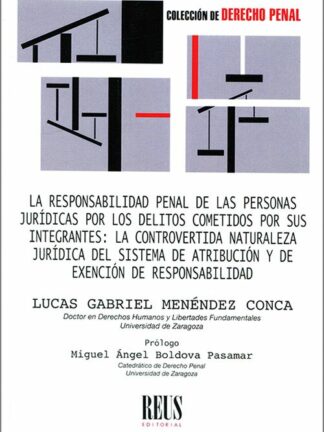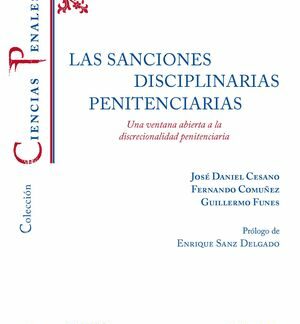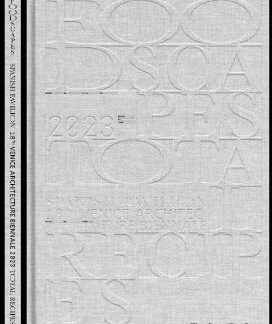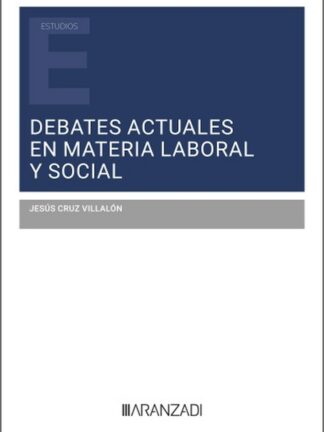Índice
Introducción, Elena de Gracia Rodríguez, Marta Blanco Carrasco y Leticia García Villaluenga
Conflicto: Definición, Proceso y análisis, Florentino Moreno Martín
1. Una propuesta de definición razonada
2. Elementos básicos para entender los conflictos
2.1. Las partes en relación. Condición de aparición del conflicto
2.2. La significación de la diferencia como incompatibilidad. El conflicto frente a otras formas de confrontación de fuerzas: competencia, desacuerdo, problema, disputa
2.3. Los motivos. La focalización de la incompatibilidad
a) La dificultad de organizar los motivos
b) Necesidades básicas y motivación humana
2.4. Contexto cultural y vivencia del tiempo
a) Contexto cultural
b) Vivencia del tiempo
3. Bibliografía
Sistemas alternativos de resolución de conflictos, Marta Blanco Carrasco y Elena Blanco
1. Los Sistemas Alternativos de Resolución de Conflictos (ADR): concepto y tipología
1.1. Evolución normativa y concepto de ADR
1.2. Breve aproximación a la diversidad de ADR
2. Sistemas que no requieren la participación de un tercero: la negociación y la transacción
2.1. La negociación como una técnica propia de los ADR
2.2. La transacción como resultado de los ADR
3. El arbitraje
4. La conciliación y su confusión con la mediación
5. Bibliografía
Mediación: un sistema para la gestión y resolución del conflicto desde una perspectiva internacional, Carlo Pilia
1. Las leyes de mediación en la Unión Europea
2. Mediación Voluntaria y obligatoria
3. Mediación facilitativa o evaluativa
4. La armonización europea de la legislación
5. Bibliografía
Estado del Arte de la mediación. Conceptos, principios, tipos, el papel del mediador, Francesca Pia Scardigno y Camillo Stefano Pasotti
1. Mediación: revisión de antecedentes
2. Conceptos claves y principios aplicables
3. Los campos de la mediación
4. Escuelas de mediación: colaborativa, transformativa y narrativa circular
5. Las lógicas plurales de la mediación: ¿cuál es el rol del mediador?
6. Bibliografía
El proceso de mediación, Catherine Vander Zande y Michel Tirions
1. Introducción: El Modelo Harvard de mediación
2. Fase 1: La fase preparatoria e introductoria
3. Fase 2: Información o exploración de intereses
3.1. El inventario de intereses
3.2. ¿Cómo explorar los intereses?
3.3. Tres tipos de intereses
3.4. Enfoque en los intereses comunes
3.5. Dificultades al explorar intereses
3.6. Finalización de esta fase
4. Fase 4: negociación
4.1. Formular una clara definición del problema
4.2. Obstáculos
4.3. Generar o explorar opciones
5. Fase 4: la fase de integración
5.1. En el camino hacia la toma de decisiones: tirarse a la piscina
5.2. Clarificar el resultado alcanzado y finalizar la fase
6. Fase 5: finalización y formalización
7. La mediación como instrumento de empoderamiento y autodeterminación
8. Bibliografía
La entrevista en mediación: habilidades básicas y otras técnicas aplicadas en el proceso de mediación, Andrés Arias Astray y Linda Vanina Ducca Cisneros
1. El repertorio técnico y competencial de la mediación: técnicas, conocimientos habilidades y actitudes
2. La importancia de la entrevista en mediación
3. Competencias básicas de la entrevista en mediación
4. El manejo y la observación de la conducta no verbal
5. El análisis y el manejo de la conducta verbal
5.1. La detección y al análisis de distorsiones cognitivas
5.2. Preguntas
5.3. Aseveraciones o afirmaciones y otras intervenciones
6. Bibliografía
Mediación como disciplina y profesión, Marta Blanco Carrasco, Ana Isabel Corchado y Jorge Manuel Leitao Ferreira
1. La mediación como disciplina
2. La mediación como profesión
3. Mediación y Trabajo Social
4. Bibliografía
Mediación familiar, Leticia García Villaluenga
1. En busca de una definición compartida
2. Los Principios de la mediación. Especial incidencia en el ámbito familiar
2.1. La voluntariedad
2.2. La confidencialidad
2.3. La imparcialidad y la neutralidad
3. Ámbitos de aplicación de la mediación familiar
4. Bibliografía
Mediación comunitaria: una propuesta abarcadora, Mara Morelli y Danilo de Luise
1. Mediación comunitaria en Italia
2. El enfoque: una propuesta abarcadora y no excluyente
3. Algunas experiencias compartidas a nivel internacional
3.1 El grupo de investigación ‘Mediación y territorios’
3.2. La experiencia de mediación entre pares en la cárcel: desde Hermosillo hasta Milán Bollate y Génova
4. Bibliografía
Integración de enfoques restaurativos en el contexto de desafíos conductuales de los jóvenes en el entorno educativo de Reino Unido, Aga Kowalska
1. Conceptualización de los enfoques restaurativos
2. Enfoques restaurativos en el ámbito educativo
3. Principales aportaciones de los Enfoques restaurativos
4. Bibliografía
Index
Introduction, Elena de Gracia Rodríguez, Marta Blanco Carrasco and Leticia García Villaluenga
Conflict: Definition, Process and Analysis, Florentino Moreno Martín
1. A reasoned proposal for a definition
2. Basic elements for understanding conflicts
2.1. The parties involved. Condition of appearance of conflict
2.2. The meaning of difference as incompatibility. Conflict in comparison with other forms of opposition of forces: competition, disagreement, problem, dispute
2.3. Motives. The focusing of incompatibility
a) The difficulty of organising motives
b) Basic needs and human motivation.
2.4. Cultural context and experience of time
a) Cultural context
b) Experience of time
3. Bibliography
Alternative Dispute Resolution Systems, Marta Blanco Carrasco and Elena Blanco
1. Alternative Dispute Resolution (ADR) systems: concept and classification
1.1. ADR: concept and evolution
1.2. A brief summary of the various forms of ADR
2. Systems that do not require the participation of a third party: negotiation and settlement
2.1. Negotiation as a technique forming part of ADR systems
2.2. Settlement as an outcome of ADR
3. Arbitration
4. Conciliation and its confusion with mediation
5. Bibliography
Mediation: a system for conflict management and resolution from an international perspective, Carlo Pilia
1. The statutes of mediation in the EU
2. Voluntary and mandatory mediation
3. Facilitative and evaluative mediation
4. European harmonization of the regulation
5. Bibliography
State of the Art of Mediation. Concepts, principles, types, the role of the mediator, Francesca Pia Scardigno and Camillo Stefano Pasotti
1. Mediation: background review
2. Key concepts and applicative principles
3. Mediation fields
4. Schools of Mediation: Collaborative, Transformative and Circular narrative
5. Plural Logics of Mediation: What role for mediator?
6. Bibliography
The Mediation Process, Catherine Vander Zande and Michel Tirions
1. Introduction: The Harvard Model for mediation
2. Phase 1: The preparation and introduction phase
2.4. Is there a willingness to solve the problem? Do the parties want to tackle the problem or the relationship? The first yes!
2.5. Is there a willingness to start a mediation process? The 2nd yes
3. Phase 2: Information or exploration of interests
3.1. The inventory of interests
3.2. How to explore the interests?
3.3. Three types of interests
3.4. Focusing on the common interests
3.5. Difficulties in working with interests
3.6. Completion of this phase
4. Phase 3: Negotiating
4.1. Formulate a clear problem definition.
4.2. Obstacles
4.3. Generating or exploring options
5. Phase 4: The integration phase
5.1. On the way to making decisions: Taking the plunge
5.2. Clarifying the achieved result and finalizing the phase
6. Phase 5: Completion and formalization
7. Mediation as an instrument for empowerment and self-determination
8. Bibliography
The interview in mediation: basic skills and other techniques applied during the mediation process, Andrés Arias Astray and Linda Vanina Ducca Cisneros
1. The technical and competency-based repertoire of mediation: techniques, knowledge, skills and attitudes
2. The importance of interviews in mediation
3. Basic interview competencies in mediation
4. Management and observation of non-verbal conduct
5. Analysis and management of verbal conduct
5.1. Detection and analysis of cognitive distortions
5.2. Questions
5.3. Assertions or statements and other interventions
6. Bibliography
Mediation as a discipline and a profession, Marta Blanco Carrasco, Ana Isabel Corchado and Jorge Manuel Leitao Ferreira
1. Mediation as a discipline
2. Mediation as a profession
3. Mediation and Social Work
4. Bibliography
Family Mediation, Leticia García Villaluenga
1. In search of a shared definition
2. The principles of mediation: specific impact in the family context
2.1. Voluntariness
2.2. Confidentiality
2.3. Impartiality and neutrality
3. Family mediation: areas of application
4. Bibliography
Community mediation: a comprehensive proposal, Mara Morelli and Danilo de Luise
1. Community mediation in Italy
2. The approach: an integrative and non-exclusive proposal
3. Some shared experiences at an international level
3.1. The «Mediation and Territories» research group
3.2. The experience of peer mediation in prison: from Hermosillo to Mila?n Bollate and Genova
4. Bibliography
The Embeddedness of Restorative Approaches in a Context of Behavioural Challenges of Young People in Educational Settings in the UK, Aga Kowalska
1. Conceptualisation of Restorative Approaches
2. Restaurative approaches in educational context
3. Restaurative approaches main contributions
4. Bibliography




















